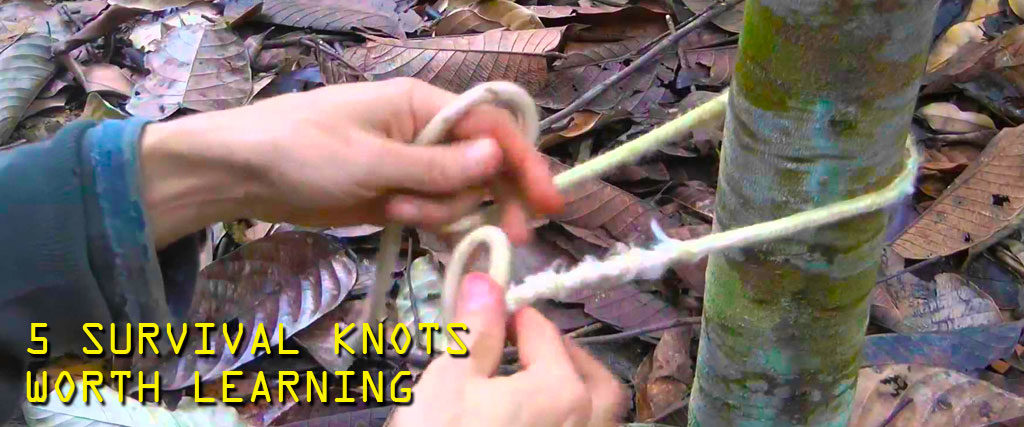5 Survival Knots Worth Learning
Basic knot tying is something that everyone should know. In a survival situation, being able to quickly tie a knot to secure a shelter or rescue someone could mean the difference between life and death.
Take a few minutes to learn these 5 critical survival knots and you will be well equipped to handle most situations!
Before beginning, I recommend using paracord while learning to tie knots. It is lightweight, cheap, and has about a million different survival uses. Make sure to buy type III paracord with 7 internal strands like this Rothco 550lb. Type III Nylon Paracord.
NOTE: Click the name of a knot to see an animation that teaches how to tie it.
1. Overhand Knot
Contents
The most basic knot of all, and probably one of the most useful. The overhand knot is called a stopper knot, or a backup knot. Stopper knots are typically tied after an initial knot to prevent it from coming undone. The overhand knot is simply rope wrapped around itself (forming a knot) to prevent the end from slipping. Other knots I will talk about involve securing a rope to an object.
Why You Should Know It
- The overhand knot can be used to prevent other knots from coming undone.
2. Two Half Hitches
The half hitch is essentially an overhand knot tied around an object. Alone, this knot isn’t very secure. But when an additional half hitch is tied, it becomes an excellent way to secure a rope around an object. After a “two half hitch” is tied, it can be easily tightened to the tree or object it was tied to.
Why You Should Know It
- An excellent way to secure rope to a tree for things such as a clothes line or tarp shelter support. This knot should only be used to secure the rope to the first of the two trees. The trucker hitch or a similar knot should be used to tighten and tie the rope to the second tree.
3. Trucker Hitch
The trucker hitch is a really cool knot that creates a loop on your rope or cord. Basically you run your rope around an object, back through the loop and the pull the end to make the line very tight. It really is amazing how tight you can get a line using two half hitches first and a trucker hitch on the other side.
Why You Should Know It
- Can be used to tighten and secure a line when the first end has already been secured to an anchor.
- Can be used to secure objects in the bed of a truck or similar scenario.
4. Bowline Knot
The bowline knot allows a fixed loop to be formed on the end of a rope. This knot can take a tremendous amount of abuse and will not slip. Its nickname is “the king of all knots” and it is often used when a rope is lowered down to rescue someone.
Why You Should Know It
- Can be used to safely raise or lower an object.
- An excellent choice any time a loop that will not slip is needed.
5. Handcuff Knot
The handcuff knot is a fun shtf knot that I thought I would throw in here 🙂 Basically it creates two loops that can be easily tightened around the wrists. After tightening, a simple overhand knot should be used to secure each end.
Why You Should Know It
- WROL – You just never know what will happen and you might need this knot to tie up a bad guy until law is restored.

